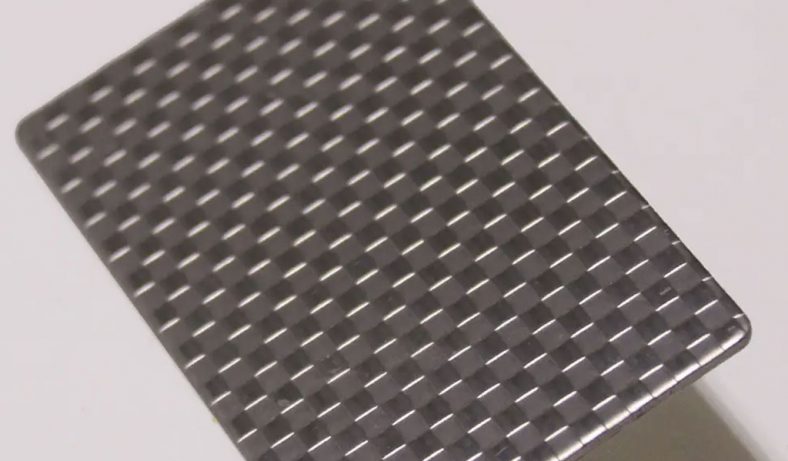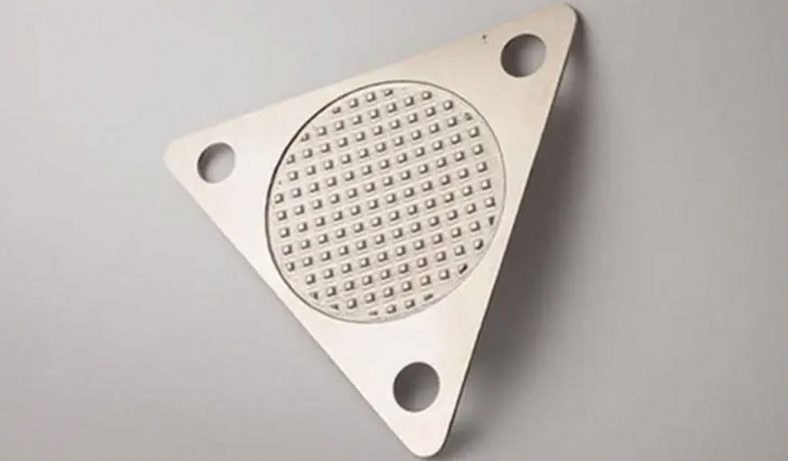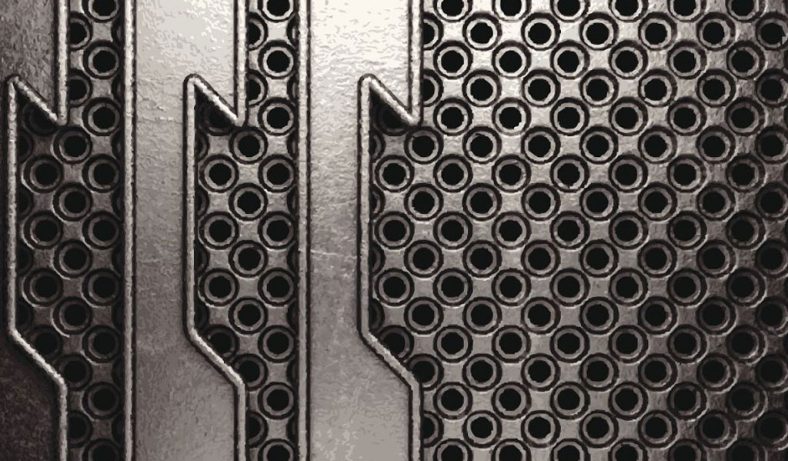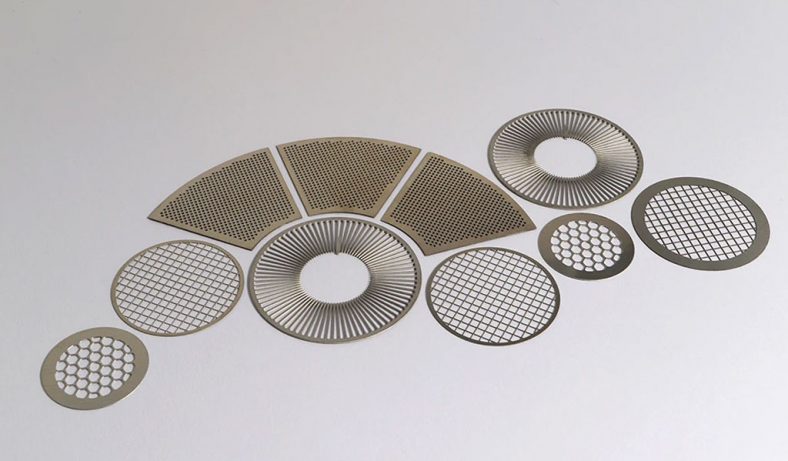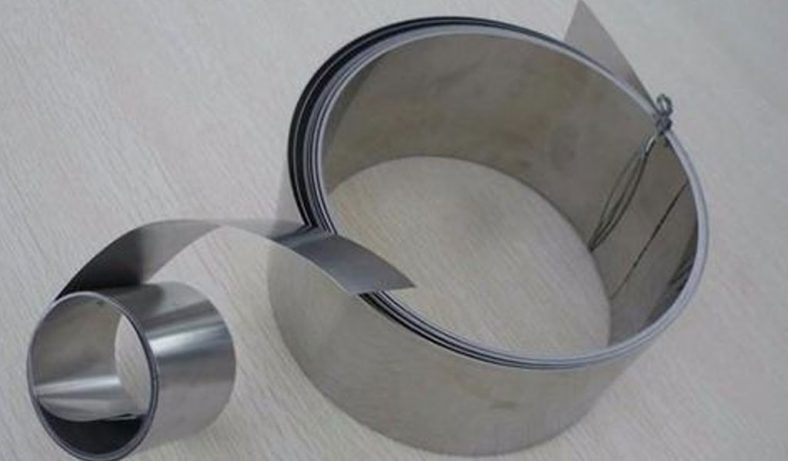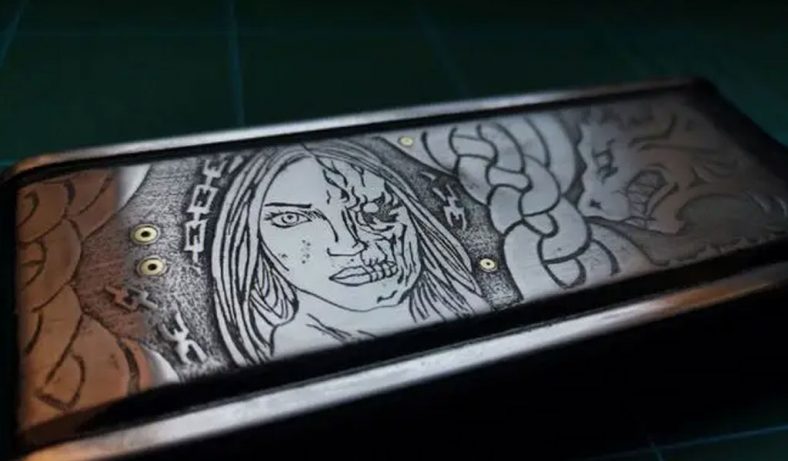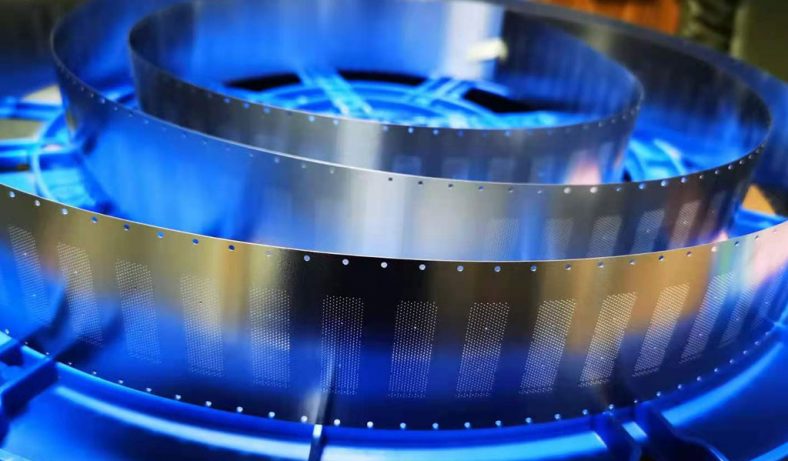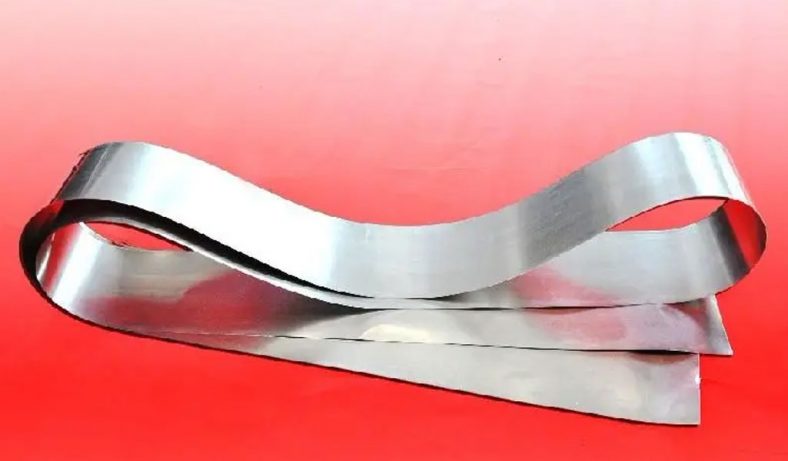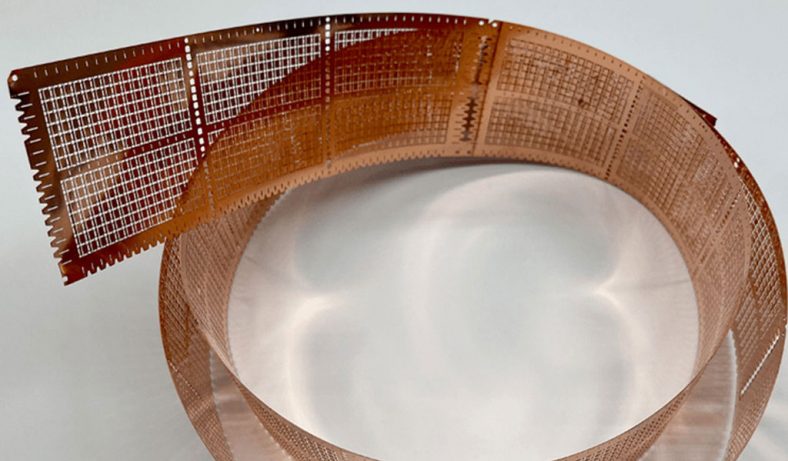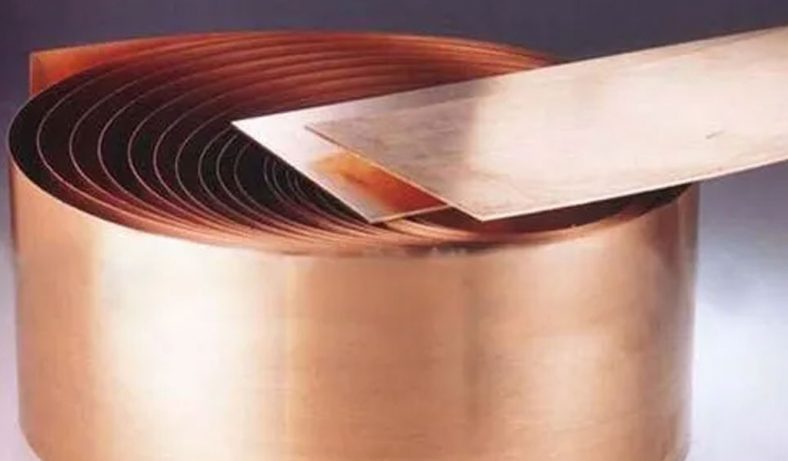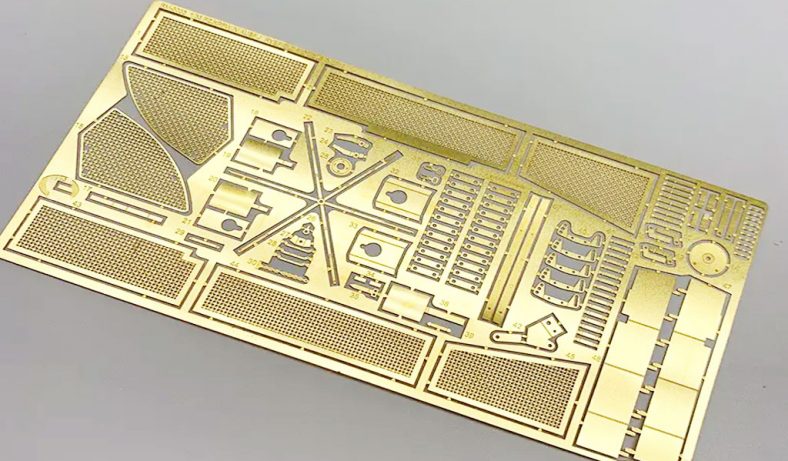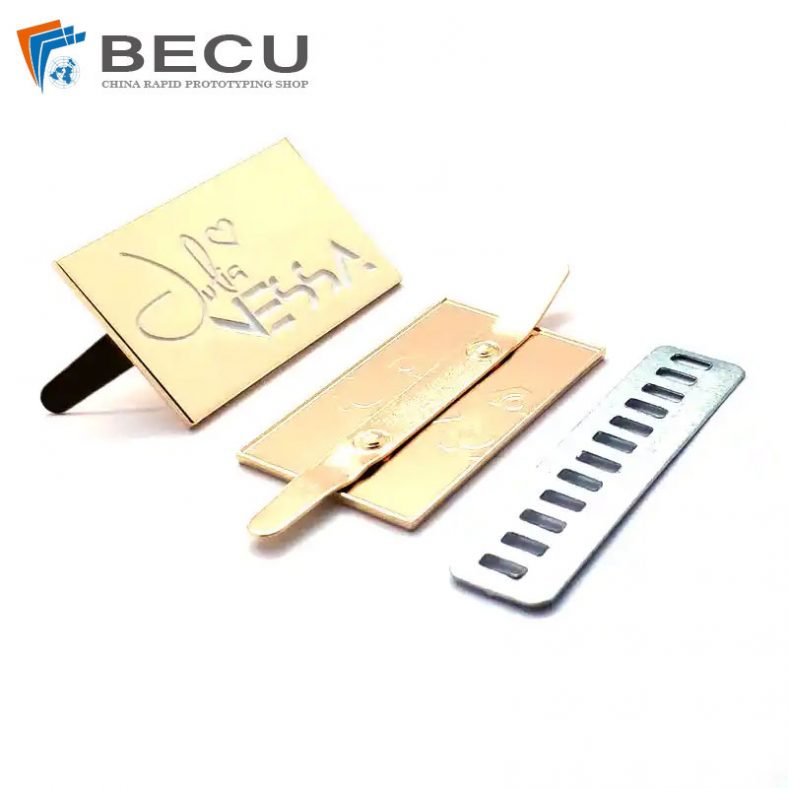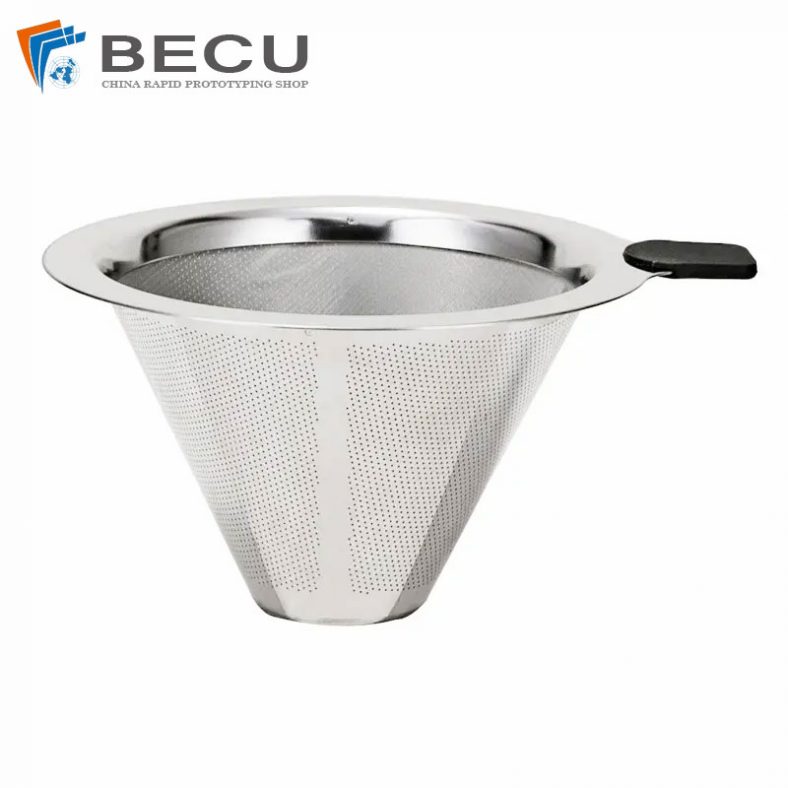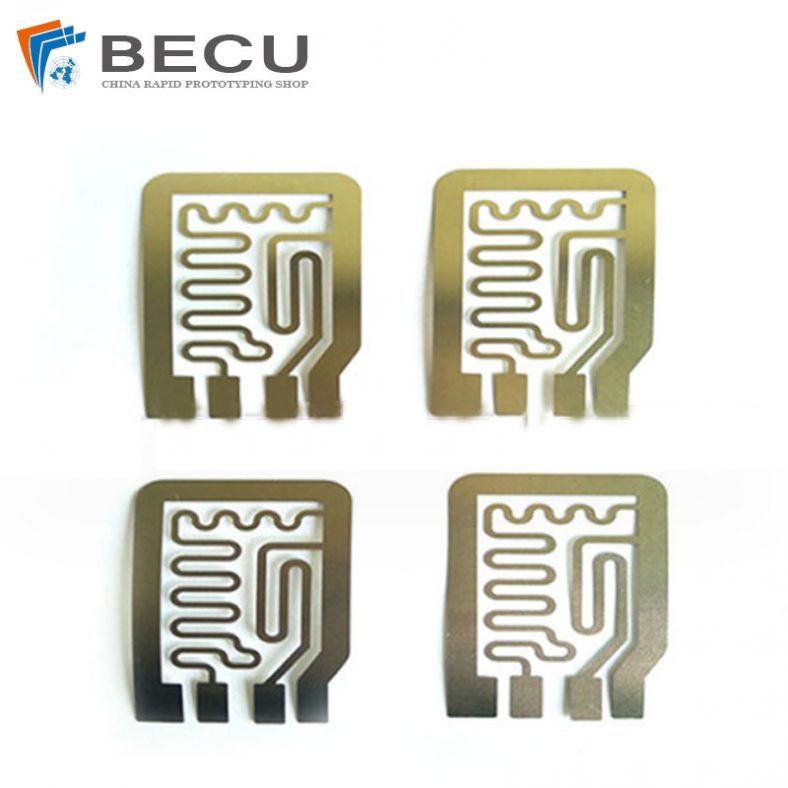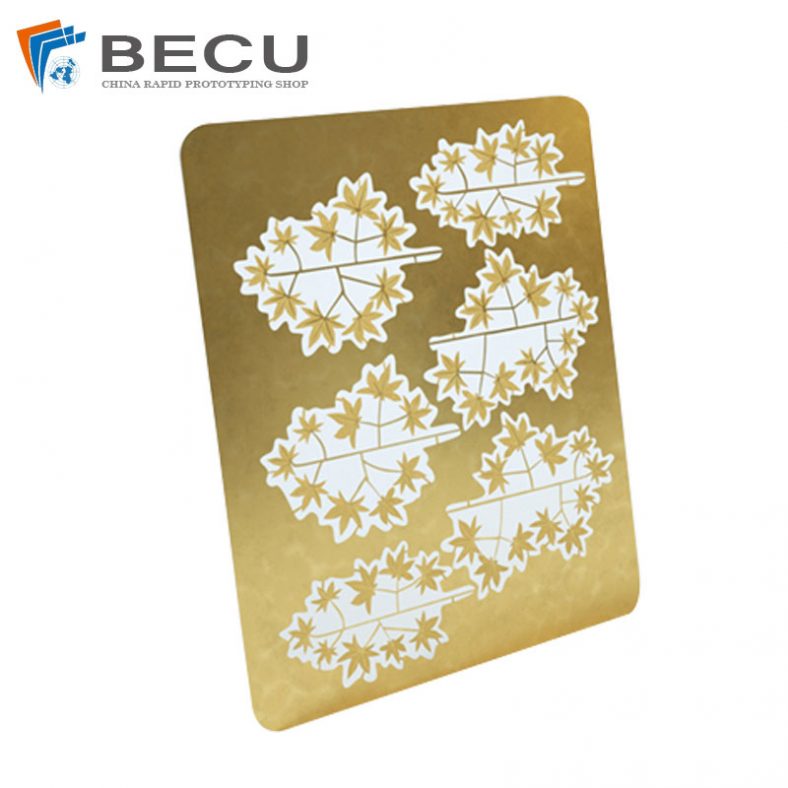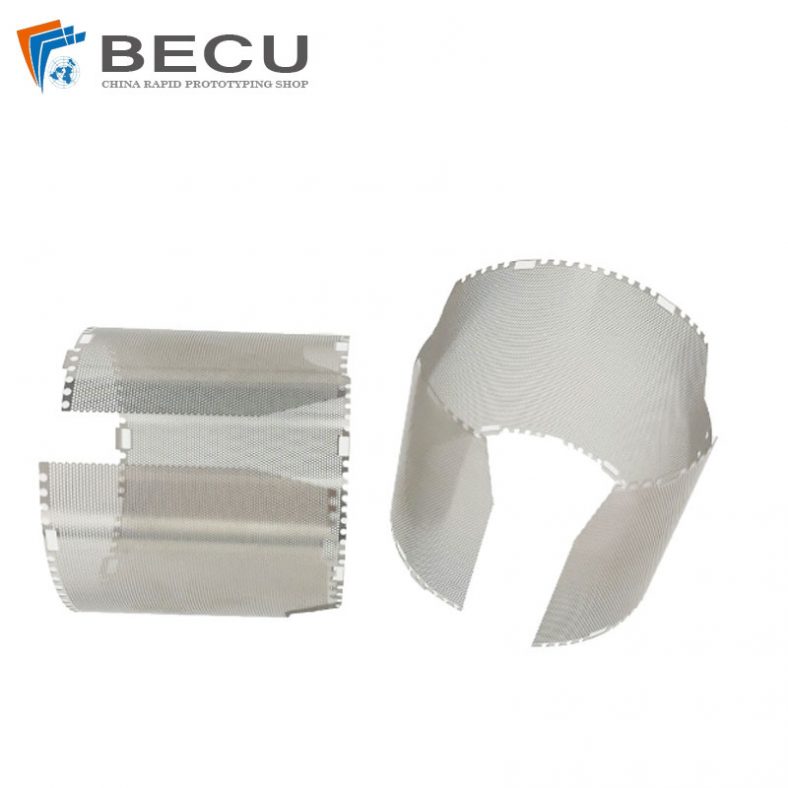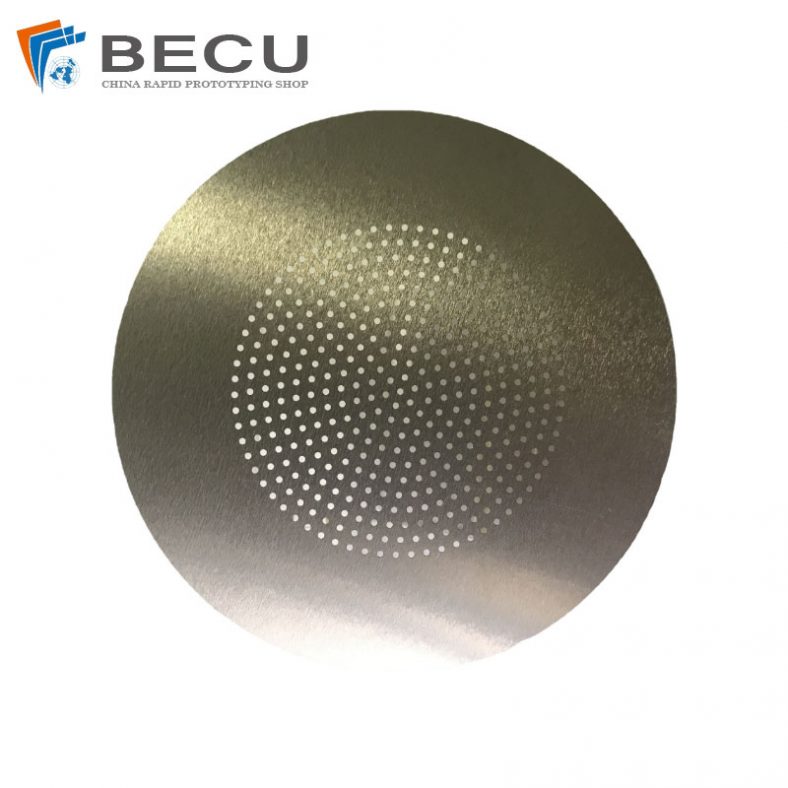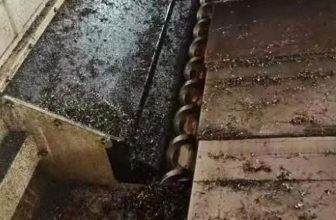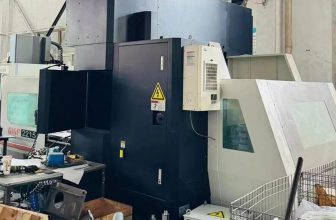Photoresist stripping is a critical step in the photochemical etching process, a subtractive manufacturing technique used to create precise, intricate metal components for industries such as electronics, aerospace, medical devices, and automotive. Photochemical etching, also known as chemical milling or photoetching, involves the selective removal of metal from a substrate using chemical etchants, guided by a patterned photoresist layer that protects specific areas of the metal surface. The photoresist, a light-sensitive material, is applied to the metal, exposed to ultraviolet (UV) light through a photomask, and developed to create a protective mask. After etching, the photoresist must be removed to reveal the final etched metal component, a process referred to as photoresist stripping.
The quality of the metal surface after etching and stripping is paramount, as it directly influences the performance, reliability, and aesthetics of the final component. Surface quality is typically evaluated through parameters such as surface roughness, uniformity, cleanliness, and the presence of defects like pitting, residual photoresist, or undercuts. The photoresist stripping process, whether performed using wet chemical methods, dry plasma ashing, or a combination of both, can significantly affect these surface characteristics. Improper stripping may leave residues, alter surface topography, or introduce defects that compromise the functionality of the etched component.
This article provides a comprehensive examination of the effect of photoresist stripping on the surface quality of metal etching. It explores the underlying mechanisms, compares different stripping methods, analyzes their impact on surface properties, and presents recent research findings through detailed tables. The discussion is grounded in scientific principles and draws on established literature to offer a thorough understanding of this critical process in modern manufacturing.
Fundamentals of Photochemical Etching
Overview of the Etching Process
Photochemical etching begins with the preparation of a metal substrate, typically a thin sheet of stainless steel, copper, aluminum, titanium, or their alloys. The metal is cleaned to remove contaminants such as grease, oxides, or particulates, ensuring proper adhesion of the photoresist. A photoresist, either positive or negative, is then applied to the metal surface, typically through spin coating, dip coating, or lamination of a dry film photoresist. The photoresist is exposed to UV light through a photomask, which defines the pattern to be etched. In positive photoresists, the exposed areas become soluble in the developer solution, while in negative photoresists, the exposed areas harden, and the unexposed areas are removed during development.
After development, the metal sheet is subjected to an etchant, commonly ferric chloride, cupric chloride, or nitric acid, which selectively removes the unprotected metal. The etching process is isotropic, meaning it occurs in all directions, leading to undercuts beneath the photoresist edges. The extent of undercutting, quantified by the etch factor (the ratio of undercut to etch depth), depends on factors such as etchant concentration, temperature, and etching time. Once the desired etch depth is achieved, the photoresist is stripped to reveal the final component, which undergoes inspection for dimensional accuracy and surface quality.
Role of Photoresist in Etching
The photoresist serves as a temporary mask that protects specific areas of the metal from the etchant. Its properties, such as adhesion to the substrate, chemical resistance, and resolution, are critical to Hawkins for achieving high-quality etching. Common photoresists include epoxy-based SU-8, novolak-based resists, and chemically amplified resists for deep ultraviolet (DUV) lithography. The photoresist must withstand the harsh chemical environment of the etchant, high temperatures, and mechanical stresses during processing. For example, SU-8, a negative photoresist, is known for its high chemical resistance and is often used in applications requiring permanent resist patterns, though it is notoriously difficult to strip.
The photoresist’s interaction with the metal surface also influences the etching outcome. Proper adhesion ensures that the resist remains intact during etching, preventing etchant seepage that could lead to defective patterns. However, strong adhesion can complicate the stripping process, potentially leaving residues or damaging the metal surface. The choice of photoresist and its compatibility with the stripping method are thus critical considerations in achieving high surface quality.
Photoresist Stripping Methods
Wet Chemical Stripping
Wet chemical stripping involves the use of liquid solvents or alkaline solutions to dissolve or weaken the photoresist, allowing it to be removed from the metal surface. Common stripping solutions include organic solvents like acetone, N-methyl-2-pyrrolidone (NMP), or dimethyl sulfoxide (DMSO), as well as alkaline strippers such as sodium hydroxide or proprietary formulations containing tetramethylammonium hydroxide (TMAH). The process typically involves immersing the etched metal in the stripping solution or spraying it in a conveyorized system, followed by rinsing and drying.
Wet stripping is widely used due to its simplicity, cost-effectiveness, and ability to process large batches. However, it has several drawbacks. Organic solvents can leave residues if not thoroughly rinsed, and aggressive alkaline solutions may attack the metal surface, particularly for sensitive materials like aluminum or titanium. The process also generates hazardous waste, requiring careful disposal to meet environmental regulations. The effectiveness of wet stripping depends on factors such as the photoresist type, stripping solution chemistry, temperature, and immersion time.
Dry Plasma Ashing
Dry plasma ashing, also known as plasma stripping, uses a plasma of reactive gases, typically oxygen, to chemically remove the photoresist. In this process, energetic electrons in the plasma break down oxygen molecules, generating reactive oxygen radicals that oxidize the organic photoresist, producing volatile byproducts like carbon monoxide (CO), carbon dioxide (CO2), and water vapor (H2O). Small amounts of fluorine-based gases, such as CF4 or SF6, can be added to enhance the stripping rate by increasing the reactivity of the plasma.
Plasma ashing is considered more environmentally friendly than wet stripping, as it produces non-toxic byproducts and eliminates the need for large volumes of chemical solvents. It is particularly effective for removing hardened or cross-linked photoresists, such as those exposed to high-dose radiation or high-temperature processes. However, plasma ashing can introduce surface damage due to ion bombardment or UV radiation, especially for delicate substrates. Downstream plasma systems, which minimize ion bombardment, are often used for sensitive applications.
Hybrid Stripping Approaches
In some cases, a combination of wet and dry stripping is employed to achieve optimal results. For example, a plasma ashing step may be used to remove the bulk of the photoresist, followed by a wet chemical rinse to eliminate residual ash or organic residues. Alternatively, UV-ozone treatment can be combined with solvent stripping to decompose organic residues, improving cleaning efficiency. Hybrid approaches are particularly useful for complex processes, such as those involving multiple resist layers or high-aspect-ratio features, where a single method may be insufficient.
Mechanisms of Surface Quality Alteration
Surface Roughness and Topography
Surface roughness, typically measured as the arithmetic average roughness (Ra) or root mean square roughness (Rq), is a key indicator of surface quality. The photoresist stripping process can influence roughness through several mechanisms. In wet stripping, aggressive chemical solutions may etch the metal surface, increasing roughness, especially for materials susceptible to corrosion. For instance, stainless steel etched with ferric chloride and stripped with sodium hydroxide may exhibit increased Ra if the stripping solution is overly concentrated or applied for too long.
In plasma ashing, surface roughness can be affected by ion bombardment, which may cause micro-scale pitting or sputtering of the metal surface. The choice of plasma gas and process parameters, such as pressure, power, and temperature, plays a significant role. For example, adding fluorine-based gases can increase the etch rate but may also lead to surface roughening if not carefully controlled. Studies have shown that downstream plasma systems, which reduce ion bombardment, produce smoother surfaces compared to direct plasma systems.
Residual Photoresist and Contamination
Incomplete photoresist removal can leave organic residues or inorganic contaminants on the metal surface, degrading its quality. In wet stripping, residues may result from insufficient immersion time, incompatible chemistry, or poor rinsing. For example, SU-8 photoresist, due to its strong cross-linking, often requires high-pressure solvent sprays or extended stripping times to achieve complete removal. Residual photoresist can act as a barrier to subsequent processing steps, such as plating or coating, and may cause adhesion issues or electrical defects in microelectronic components.
Plasma ashing is generally more effective at removing organic residues, but it can introduce other contaminants, such as metal oxides or ash particles, if the process is not optimized. Post-ashing wet cleaning is often necessary to ensure a pristine surface. The presence of residues can also affect surface wettability, as measured by contact angle, which is critical for applications requiring hydrophobic or hydrophilic surfaces.
Undercut and Edge Profile
The photoresist stripping process can influence the extent of undercutting, which occurs during etching but may be exacerbated during stripping. In wet stripping, lateral etching by the stripping solution can widen undercuts, reducing the dimensional accuracy of the etched features. This is particularly problematic for high-resolution patterns, where even small deviations can lead to functional failures. Plasma ashing, being a dry process, typically does not contribute to undercutting, but improper process control can cause over-etching of the metal surface, altering the edge profile.
The edge profile, defined by the slope and uniformity of the etched feature’s sidewalls, is another critical aspect of surface quality. Ideally, the sidewalls should be vertical or slightly tapered to ensure structural integrity and ease of subsequent processing. Stripping-induced changes to the edge profile can result from chemical attack, residue buildup, or thermal effects in plasma ashing, all of which must be carefully managed to maintain high-quality surfaces.
Impact of Stripping on Different Metals
Stainless Steel
Stainless steel, particularly grades like 304 and 316L, is widely used in photochemical etching due to its corrosion resistance and mechanical properties. Wet stripping with alkaline solutions, such as sodium hydroxide, is common for stainless steel, but prolonged exposure can lead to surface pitting or increased roughness, especially in the presence of chloride ions from the etchant. Plasma ashing is often preferred for stainless steel, as it minimizes chemical attack, though care must be taken to avoid surface oxidation.
Recent studies have shown that the choice of etchant influences the stripping outcome. For example, ferric chloride etching followed by plasma ashing results in lower Ra values (0.2–0.4 µm) compared to cupric chloride etching with wet stripping (0.5–0.7 µm). The presence of alloying elements, such as chromium and nickel, also affects the stripping process, with higher chromium content improving resistance to chemical attack during wet stripping.
Copper and Copper Alloys
Copper, used extensively in printed circuit boards (PCBs) and electronic components, is highly susceptible to oxidation and chemical attack during stripping. Ammoniacal etchants, such as ammonium chloride, are commonly used for copper etching, but residual etchant can react with the metal during wet stripping, leading to surface discoloration or pitting. Organic solvents like NMP are effective for copper but require thorough rinsing to prevent residue formation.
Plasma ashing is advantageous for copper, as it avoids liquid-phase reactions, but excessive oxygen plasma exposure can form copper oxides, increasing surface roughness. Hybrid approaches, combining plasma ashing with a solvent rinse, have been shown to achieve Ra values as low as 0.1 µm, making them suitable for high-precision applications like PCB manufacturing.
Aluminum and Titanium
Aluminum and titanium, used in aerospace and medical applications, are challenging to strip due to their reactivity. Alkaline strippers can cause pitting or dissolution of aluminum, while titanium requires specialized solvents or plasma processes to avoid surface damage. Plasma ashing is often preferred for these metals, as it minimizes chemical attack, but low-pressure systems are necessary to prevent ion-induced roughening.
For aluminum, studies indicate that wet stripping with DMSO followed by a water rinse produces smoother surfaces (Ra ≈ 0.3 µm) than alkaline stripping (Ra ≈ 0.6 µm). Titanium benefits from oxygen plasma ashing with CF4 additives, which enhances stripping efficiency while maintaining surface quality (Ra ≈ 0.2 µm).
Comparative Analysis of Stripping Methods
To provide a quantitative comparison of stripping methods, the following tables summarize key performance metrics based on recent research and industry data. The metrics include surface roughness (Ra), residual photoresist (measured as percentage of surface coverage), stripping time, and environmental impact (rated qualitatively).
Table 1: Comparison of Stripping Methods for Stainless Steel (304)
| Stripping Method | Surface Roughness (Ra, µm) | Residual Photoresist (%) | Stripping Time (min) | Environmental Impact |
|---|---|---|---|---|
| Wet (NaOH, 5 M) | 0.5–0.7 | 2–5 | 5–10 | High (hazardous waste) |
| Wet (NMP) | 0.3–0.5 | 1–3 | 3–7 | Moderate (solvent disposal) |
| Plasma (O2) | 0.2–0.4 | <1 | 2–5 | Low (non-toxic byproducts) |
| Hybrid (O2 + NMP) | 0.2–0.3 | <0.5 | 4–8 | Moderate (combined waste) |
Table 2: Comparison of Stripping Methods for Copper
| Stripping Method | Surface Roughness (Ra, µm) | Residual Photoresist (%) | Stripping Time (min) | Environmental Impact |
|---|---|---|---|---|
| Wet (NH4OH) | 0.4–0.6 | 3–6 | 4–8 | High (ammonia waste) |
| Wet (DMSO) | 0.2–0.4 | 1–4 | 3–6 | Moderate (solvent disposal) |
| Plasma (O2 + CF4) | 0.1–0.3 | <1 | 2–4 | Low (non-toxic byproducts) |
| Hybrid (O2 + DMSO) | 0.1–0.2 | <0.5 | 3–6 | Moderate (combined waste) |
Table 3: Comparison of Stripping Methods for Aluminum
| Stripping Method | Surface Roughness (Ra, µm) | Residual Photoresist (%) | Stripping Time (min) | Environmental Impact |
|---|---|---|---|---|
| Wet (NaOH, 2 M) | 0.6–0.8 | 4–7 | 6–12 | High (corrosive waste) |
| Wet (DMSO) | 0.3–0.5 | 2–4 | 4–8 | Moderate (solvent disposal) |
| Plasma (O2) | 0.2–0.4 | <1 | 3–6 | Low (non-toxic byproducts) |
| Hybrid (O2 + DMSO) | 0.2–0.3 | <0.5 | 5–9 | Moderate (combined waste) |
These tables highlight the trade-offs between stripping methods. Plasma-based methods generally produce smoother surfaces and lower residual photoresist, but they require specialized equipment and higher initial costs. Wet methods are more accessible but pose environmental challenges and may compromise surface quality, particularly for reactive metals.
Recent Advances in Photoresist Stripping
Novel Stripping Chemistries
Recent research has focused on developing environmentally friendly stripping solutions to replace traditional solvents and alkaline strippers. Semi-aqueous formulations containing carboxylic acids, such as citric acid (CA) or lactic acid (LA), have shown promise for copper and aluminum. These solutions offer high selectivity, minimizing metal etching while effectively removing photoresist. For example, a 10 wt% CA solution at pH 2–4 achieves a copper etching selectivity of over 88%, with minimal surface roughening.
Supercritical carbon dioxide (scCO2) has also emerged as a green stripping medium. scCO2, combined with co-solvents like methanol, can dissolve photoresist without leaving residues, and its low viscosity allows penetration into high-aspect-ratio features. Studies report Ra values as low as 0.1 µm for scCO2 stripping of copper, with no hazardous waste generation.
Advanced Plasma Systems
Advances in plasma technology have improved the precision and uniformity of photoresist stripping. Tergeo plasma systems, equipped with mass flow controllers and plasma sensors, offer real-time monitoring of plasma strength, ensuring consistent results. Downstream plasma systems with low-pressure operation (0.1–1 Torr) minimize ion bombardment, reducing surface damage for sensitive substrates like titanium. The addition of hydrogen plasma has been explored to prevent oxide formation on copper and aluminum, achieving Ra values of 0.15–0.25 µm.
UV-Ozone and Laser Stripping
UV-ozone stripping, which combines UV light and ozone to decompose organic photoresist, is gaining traction for its simplicity and effectiveness. This method is particularly suited for thin resist layers, producing clean surfaces with Ra ≈ 0.2 µm. Laser-based stripping, using pulsed excimer lasers, offers high precision for selective resist removal but is limited by high equipment costs and slower processing times.
Case Studies and Experimental Results
Case Study 1: Stainless Steel Microchannels
A 2023 study investigated the effect of stripping methods on stainless steel (316L) microchannels for biomedical applications. Ferric chloride was used as the etchant, with SU-8 as the photoresist. Three stripping methods were compared: wet stripping with NMP, plasma ashing with O2, and a hybrid approach. The results, summarized in Table 4, showed that plasma ashing produced the smoothest surfaces (Ra = 0.25 µm) and lowest residual photoresist (<0.5%), but the hybrid approach offered the best balance of speed and quality.
Table 4: Stripping Results for Stainless Steel Microchannels
| Stripping Method | Ra (µm) | Residual Photoresist (%) | Stripping Time (min) |
|---|---|---|---|
| Wet (NMP) | 0.45 | 2.8 | 6 |
| Plasma (O2) | 0.25 | 0.4 | 4 |
| Hybrid (O2 + NMP) | 0.30 | 0.3 | 5 |
Case Study 2: Copper PCB Fabrication
A 2024 experiment examined photoresist stripping in copper PCB fabrication using ammonium chloride etchant and a novolak-based photoresist. Wet stripping with DMSO, plasma ashing with O2/CF4, and a hybrid method were tested. Plasma ashing achieved the lowest Ra (0.12 µm) and no detectable residues, but the hybrid method was preferred for its scalability in high-volume production.
Table 5: Stripping Results for Copper PCBs
| Stripping Method | Ra (µm) | Residual Photoresist (%) | Stripping Time (min) |
|---|---|---|---|
| Wet (DMSO) | 0.35 | 3.1 | 5 |
| Plasma (O2/CF4) | 0.12 | <0.1 | 3 |
| Hybrid (O2 + DMSO) | 0.15 | 0.2 | 4 |
Challenges and Future Directions
Challenges in Photoresist Stripping
One of the primary challenges in photoresist stripping is balancing efficiency with surface quality. Aggressive stripping methods, while fast, can damage the metal surface, while gentler methods may be too slow for high-throughput manufacturing. The diversity of photoresists and metal substrates further complicates process optimization, as each combination requires tailored chemistry and conditions. Environmental concerns, particularly the disposal of hazardous wet stripping waste, remain a significant issue, driving the need for greener alternatives.
Another challenge is the stripping of advanced photoresists, such as those used in extreme ultraviolet (EUV) lithography. These resists, often metal-oxide-based, have high etch resistance and require specialized stripping techniques, such as high-energy plasma or laser-based methods, which are costly and complex.
Future Directions
The future of photoresist stripping lies in sustainable, high-precision technologies. Green chemistries, such as scCO2 and bio-based solvents, are expected to gain prominence, driven by regulatory pressures and industry demand for eco-friendly processes. Advances in plasma technology, including machine learning-driven process control, will enhance the reproducibility and scalability of dry stripping. Hybrid methods, combining the strengths of wet and dry approaches, are likely to become standard for complex applications.
Emerging techniques, such as atomic layer etching (ALE) and directed self-assembly (DSA), may integrate with stripping processes to achieve sub-10 nm feature sizes, requiring ultra-precise surface preparation. Collaborative research between academia and industry will be crucial to address these challenges and develop next-generation stripping solutions.
Conclusion
Photoresist stripping is a pivotal step in photochemical etching, profoundly influencing the surface quality of etched metal components. Wet chemical stripping, plasma ashing, and hybrid approaches each offer distinct advantages and challenges, with their impact on surface roughness, residual photoresist, and edge profile depending on the metal substrate, photoresist type, and process parameters. Stainless steel, copper, aluminum, and titanium each present unique considerations, necessitating tailored stripping strategies to achieve optimal results.
Recent advances, including novel chemistries, advanced plasma systems, and alternative methods like UV-ozone and laser stripping, are pushing the boundaries of surface quality and environmental sustainability. Comparative analyses, supported by detailed experimental data, underscore the superiority of plasma-based methods for achieving smooth, residue-free surfaces, though hybrid approaches offer practical benefits for scalability. As manufacturing demands evolve toward smaller, more precise components, the development of green, high-performance stripping technologies will be critical to meeting industry needs.
This comprehensive exploration of photoresist stripping’s effect on metal etching surface quality highlights its complexity and importance, providing a foundation for researchers, engineers, and manufacturers to optimize processes and advance the field of precision manufacturing.

